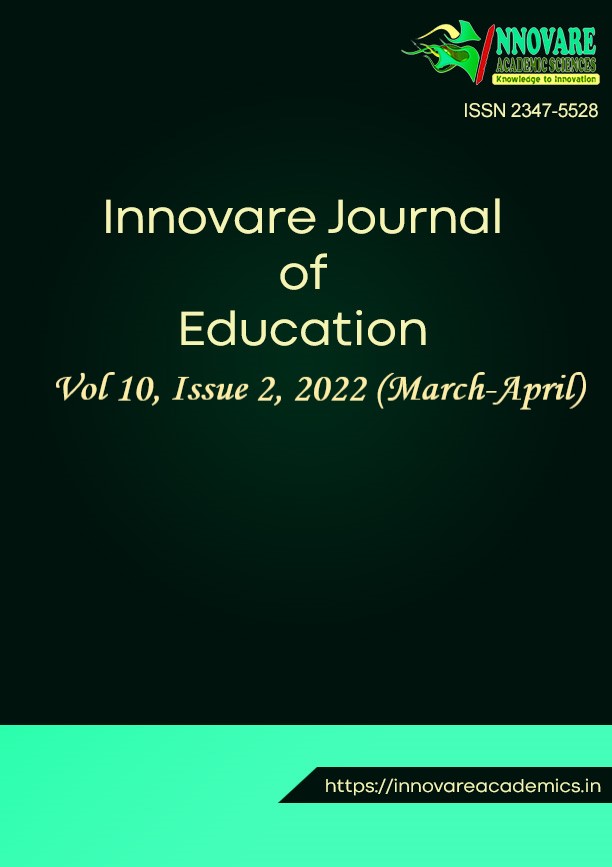Forging a New Paradigm: On the Structure of the Interdisciplinary and its Application (part 3)
DOI:
https://doi.org/10.22159/ijoe.2022v10i2.44368Keywords:
paradigm, inter-disciplinary, framework, practiceAbstract
This article has three sections. In section one, I define my terms which leads to an outline of what this New Paradigm is. In section two, I develop this paradigm and suggest a visualization of it, a structure as it were. This will assist in a more thorough understanding of such a paradigm. Theoretical speculations and modeling aside or rather avoiding a “purely” philosophical bias, I then apply this model to an example culled from art and aesthetics, yet involving, in line with this New Paradigm, other disciplines such as science and sport in order to exemplify or perhaps prove my argument, by virtue of the “mixture” or inter-disciplinary framework as applied to several different variables. This section forms the bulk of the article as such an application concretizes the theoretical framework in specific ways so that the reader will ascertain the usefulness of such a venture, which in turn ought to spur and spawn future research.
Downloads
References
Blanchard, K. (1995). The anthropology of sport: An introduction. Bergin & Garvey.
Brohm, J. M. (1989). Sport: A prison of measured time. Pluto Press.
Cashmore, E. (1990). Making sense of sport. Routledge.
Cook, R. (1972). Greek art: Its development, character and influence. Penguin.
Efron, J. M. (2008). Critique of pure football. Sport in History, 28(1), 123–150. https://doi.org/10.1080/17460260801889285
Escalera, C. C. (2012). On Wittgenstein’s extension of the domain of aesthetic education: Intransitive knowledge and ethics. Journal of Aesthetic Education, 46(3), 53–68. https://doi.org/10.5406/jaesteduc.46.3.0053
Kleeblatt, N. L. (Ed.) (2001). Mirroring evil: Nazi imagery/recent art. Jewish Museum.
Kripke, S. (1982). On philosophical paradigms. Blackwell Publishing.
Miller, S. G. (2004). Ancient Greek athletics. Yale University Press.
Paskow, A. (2004). The paradoxes of art: A phenomenological investigation. Cambridge University Press.
Petropoulos, J. (1996). Art and politics in the third Reich. University of North Carolina Press.
Roche, M. (2000). Mega-events and modernity. Routledge.
Rowe, D. (2004). Sport, culture and the media: An unruly trinity. Open University Press.
Schall, J. V. (2003). Sports and philosophy. Vital Speeches, 69(10), 303–307.
Stickney, J. (2008). Wittgenstein’s “relativity”: Training in language-games and agreement in forms of life. Educational Philosophy and Theory, 40(5), 621–637. https://doi.org/10.1111/j.1469-5812.2008.00450.x
Wertz, S. K. (1984). A response to best on art and sport. Journal of Aesthetic Education, 18(4), 105-108. https://doi.org/10.2307/3332634
Wittgenstein, L. (1958). Philosophical investigations (2nd ed) (G. E. Anscombe Trans.). Basil Blackwell. (Original Work Published 1953)
Published
How to Cite
Issue
Section

This work is licensed under a Creative Commons Attribution 4.0 International License.





